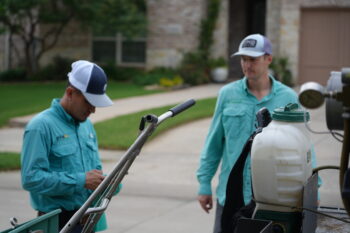Get Your Zoysia, Bermuda, or St. Augustine Grass Summer-Ready!
Spring in North Texas is like Mother Nature hitting the “go” button. One day, it’s 55°F and drizzly; the next, it’s 85°F and sunny. For your lawn, this means it’s time to wake up—but how you care for it now sets the stage for a lush, green summer. Whether you’ve got hardy Bermuda, shade-loving St. Augustine, or low-maintenance Zoysia, here’s your step-by-step guide to spring lawn care in our unique climate.
1. Timing is Everything: When to Start
🌱 Key Rule: Wait until soil temps hit 65°F.
In North Texas, this usually happens by mid-March to early April. Use a soil thermometer (or check local ag extension reports) to confirm. Starting too early can stress grass still recovering from winter dormancy.
- Zoysia: The slow starter. Don’t panic if it stays brown until late April—it’s just fashionably late.
- Bermuda: The early riser. First to green up, often by mid-March.
- St. Augustine: Mid-spring performer. Greens up once nights stay above 60°F.
2. Mowing: Height Matters
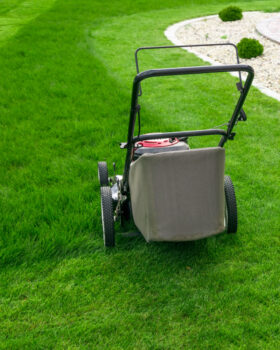
✂️ Golden Rule: Never remove more than ⅓ of the blade in one cut.
- Zoysia: Mow to 1.5–2 inches. Keeps it dense and weeds at bay.
- Bermuda: Keep it short—1–1.5 inches. Promotes lateral growth and that carpet-like look.
- St. Augustine: Let it grow taller—2.5–3 inches. Protects roots from sun stress and retains moisture.
Pro Tip: Sharpen your mower blades! Ragged cuts = brown tips = unhappy grass.
3. Watering: Deep & Infrequent Wins
💧 North Texas Rule: Water deeply 1–2x/week, not daily.
Aim for 1 inch of water per week (including rainfall). Early morning is best to reduce evaporation and fungal risk.
- Zoysia: Drought-tolerant once established. Water only if spring is unusually dry.
- Bermuda: Thrives with less water, but don’t let it dry out completely during green-up.
- St. Augustine: Thirstier! Needs consistent moisture to avoid patchy thinning.
Watch For: Clay soils (common here) hold water longer. Adjust to avoid soggy roots.
 4. Fertilizing: Feed Your Grass Right
4. Fertilizing: Feed Your Grass Right
🌱 Schedule: Apply first round when grass is 50% green.
- Zoysia: Use a balanced fertilizer (15-5-10) in April and again in June. Avoid high nitrogen early—it invites weeds.
- Bermuda: Hit it with high nitrogen (20-5-10) in April, then every 6–8 weeks until September.
- St. Augustine: Go for slow-release (16-4-8) in April and June. Too much nitrogen = thatch buildup.
Soil Test First! North Texas soils are often alkaline. A $15 test will tell you exactly what your lawn needs.
Check out our Weed and Feed Guide Schedule for Lawn Care.
5. Weed Control: Attack Early
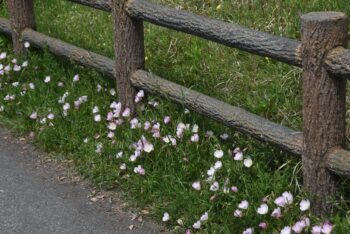
🌿 Critical Move: Apply pre-emergent herbicides by mid-March. Learn the secrets about pre-emergent herbicides.
Target crabgrass and grassy weeds before they sprout. For existing weeds (dandelions, clover):
- Zoysia/Bermuda: Use a post-emergent herbicide with 2,4-D (safe for warm-season grasses).
- St. Augustine: Avoid herbicides with atrazine during green-up. Opt for organic corn gluten meal for mild weed suppression.
⚠️ Caution: Never apply weed-and-feed products until after green-up. They can harm emerging grass.
Take a look at our weed identification guide to see which weeds are invading your lawn.
6. Aeration & Dethatching: Let It Breathe
⏰ When: Late spring (May) for Bermuda and Zoysia; skip St. Augustine unless thatch is over 1” thick.
- Bermuda/Zoysia: Core aerate to relieve compacted clay soil. Follow with topdressing (compost or sand).
- St. Augustine: Avoid aggressive dethatching—it’s shallow-rooted. Use a rake to gently remove dead debris.
7. Pest Patrol: Chinch Bugs & Grubs
🐛 Common Culprits:
- Chinch Bugs: Love St. Augustine. Look for yellowing patches. Treat with bifenthrin.
- Grubs: Target all grasses. Apply grub preventer (imidacloprid) by late May.
- Fire Ants: Broadcast bait (like Amdro) on cool mornings when they’re foraging.
8. Shade & Sun Tips
- Zoysia: Handles sun but struggles in deep shade. Trim trees to allow light.
- Bermuda: Full sun only! Thin or replace shaded areas with St. Augustine.
- St. Augustine: The shade champ. Keep it healthy with proper watering to resist fungus.
9. Spring Checklist by Grass Type
🌱 Zoysia:
- Mow high
- Apply pre-emergent
- Fertilize in April
🌿 Bermuda:
- Mow low
- Aerate in May
- Hit with nitrogen
🍃 St. Augustine:
- Water consistently
- Skip heavy herbicides
- Watch for chinch bugs
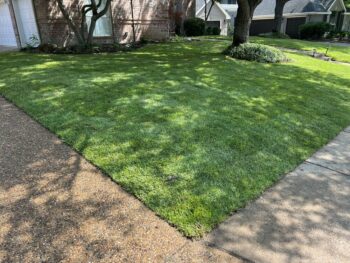
10. Prep for Summer Heat
By late May, transition to summer routines:
- Raise mower height slightly to protect roots.
- Mulch grass clippings to retain moisture.
- Adjust irrigation as temps climb (up to 1.5”/week in July).
Final Tip: Don’t stress perfection. North Texas lawns face brutal summers, droughts, and clay soil. Focus on building resilient roots now, and your grass will thank you in August!
Got questions? Request a quote today!
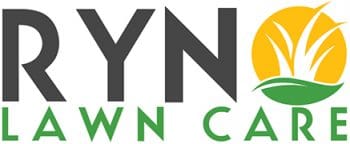
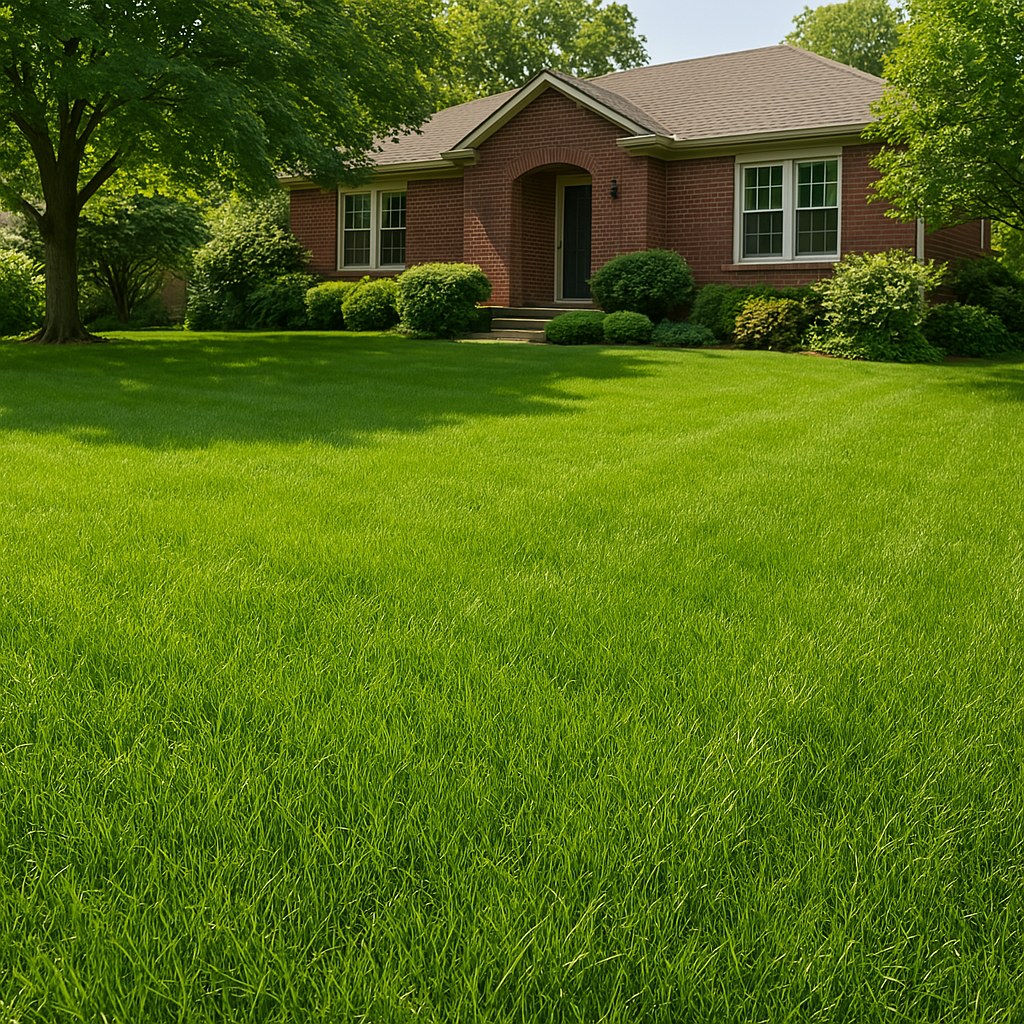
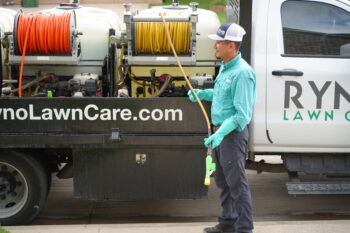 4. Fertilizing: Feed Your Grass Right
4. Fertilizing: Feed Your Grass Right
